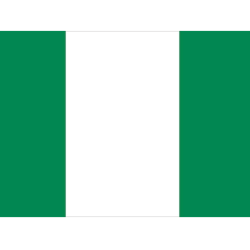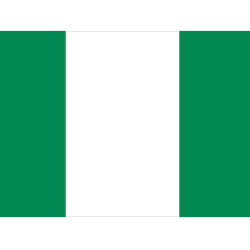The 22 deposit-taking Microfinance Companies in Rwanda are:
- INKINGI MICROFINANCE
- AMASEZERANO COMMUNITY BANKING PLC
- VISIONFUND Rwanda PLC
- SAGER GANZA MICROFINANCE PLC
- COPEDU PLC
- DUTERIMBERE IMF PLC
- LETSHEGO Rwanda PLC
- GOSHEN FINANCE PLC
- RESEAU INTERDIOCESAIN DE MICROFINANCE (RIM) PLC
- FINANCIAL SAFETY COMPANY LTD
- ASA International Rwanda PLC
- CLECAM EJO HEZA PLC
- UMUTANGUHA FINANCE COMPANY PLC
- TRUST CAPITAL KIRA MICROFINANCE PLC
- INKUNGA FINANCE PLC
- UMURIMO FINANCE PLC
- JALI SC PLC
- BRAC Rwanda Microfinance PLC
- ATLANTIQUE MICROFINANCE PLC
- AB Rwanda PLC
- URWEGO FINANCE CBC
- LOLC UNGUKA FINANCE PLC
Microfinance Banks in Rwanda
Microfinance Banks in Rwanda: Growth, Impact, and Future Outlook
How microfinance banks in Rwanda are driving financial inclusion, supporting small businesses, and empowering communities. Learn about top banks, services, challenges, and trends.
Microfinance Banks in Rwanda
Microfinance banks in Rwanda are specialized financial institutions that provide small-scale loans, savings services, and other financial products to individuals and businesses excluded from traditional banking. Unlike informal lending groups or cooperatives, microfinance banks operate under strict regulation from the National Bank of Rwanda (BNR) and have a broader service offering, often incorporating modern banking technologies.
The role of these banks has grown significantly in the last two decades. According to the BNR Microfinance Sector Report 2024, microfinance banks account for over 30% of total microfinance loan disbursements in the country and serve more than 500,000 active clients, with a strong focus on women, rural communities, and small enterprises.
Historical Development of Microfinance Banking in Rwanda
The concept of microfinance banking in Rwanda emerged in the early 2000s, as policymakers recognized the need for more formalized and scalable financial institutions beyond SACCOs and NGO-based MFIs. This led to:
- 2004–2008: Early entrants like Urwego Bank transitioning from NGO microcredit programs into licensed microfinance banks.
- 2011: Comprehensive microfinance regulations by BNR, setting capital requirements, governance rules, and reporting standards.
- 2015–2024: Digital transformation, with banks integrating mobile banking and agent networks to reach rural customers.
Regulatory Framework
Microfinance banks in Rwanda must comply with the following key regulations:
- Licensing and Supervision: Only institutions licensed by the BNR can operate as microfinance banks.
- Capital Adequacy Requirements: Minimum capital thresholds ensure financial stability.
- Deposit Protection Measures: Safeguarding client funds through regulated practices.
- Consumer Protection: Interest rate transparency, fair lending practices, and dispute resolution mechanisms.
BNR also encourages banks to adopt digital financial services to expand outreach and reduce operating costs.
Top Microfinance Banks in Rwanda
Here are some of the most notable players:
| Bank | Year Founded | Special Focus | Active Clients |
|---|---|---|---|
| Urwego Bank | 1997 (as NGO), licensed as bank in 2007 | Women entrepreneurs, rural microbusinesses | 80,000+ |
| AB Bank Rwanda | 2013 | SMEs, startup financing | 60,000+ |
| Unguka Bank | 2005 | Small traders, agriculture | 50,000+ |
| Zigama CSS | 1997 | Military, police, public service personnel | 100,000+ |
| VisionFund Rwanda Bank | 1997 (microfinance arm of World Vision) | Vulnerable households | 28,000+ |
Key Services Provided
Microfinance banks in Rwanda typically offer:
- Microloans: Ranging from RWF 50,000 to several million, depending on the borrower’s needs and repayment capacity.
- Savings Accounts: Encouraging long-term financial planning.
- Insurance Products: Covering health, life, and agricultural risks.
- Mobile and Agent Banking: Making financial services accessible in rural areas.
- Financial Literacy Training: Equipping clients with budgeting and business management skills.
Economic Impact of Microfinance Banks
Microfinance banks play a central role in:
- Promoting Entrepreneurship: Providing start-up capital for small businesses.
- Boosting Agriculture: Financing seeds, equipment, and irrigation systems.
- Empowering Women: Over 60% of microfinance bank clients are women.
- Reducing Poverty: Helping low-income households generate sustainable income.
For example, AB Bank Rwanda reports that 70% of its agricultural loan recipients increased production within the first year of borrowing.
Challenges Facing Microfinance Banks
Despite their impact, these banks face several challenges:
- High Default Rates: Especially in sectors vulnerable to climate and market shocks.
- Limited Long-Term Funding: Reliance on donor funds and expensive borrowing from larger banks.
- Technological Gaps: Rural connectivity and digital literacy issues.
- Regulatory Costs: Compliance can be expensive for smaller banks.
Technological Innovations in the Sector
The last five years have seen significant technological adoption:
- Mobile Banking Apps: Offered by Urwego Bank, AB Bank, and others.
- Agent Banking Networks: Reducing travel time for rural customers.
- Digital Credit Scoring: Using mobile transaction history to determine creditworthiness.
Government and International Support
- Financial Sector Development Program (FSDP): Strengthens microfinance bank capacity and governance.
- Partnerships with NGOs: For client training and funding support.
- Women and Youth Funds: Special financing lines to encourage inclusive banking.
Future Outlook
The future of microfinance banks in Rwanda is promising, with trends pointing towards:
- Increased digitalization and AI-driven lending.
- More green financing for sustainable agriculture and clean energy.
- Regional expansion of Rwandan microfinance banks into neighboring countries.

FAQs
1. What’s the difference between a microfinance bank and a SACCO in Rwanda?
Microfinance banks are licensed and regulated banks with wider service offerings, while SACCOs are member-owned cooperatives.
2. Can foreigners open accounts with microfinance banks in Rwanda?
Yes, most banks allow it, subject to KYC and residency requirements.
3. What’s the typical interest rate for microfinance bank loans?
Rates range between 13%–22% annually, depending on loan type.
4. Which is the largest microfinance bank in Rwanda?
In terms of clients, Zigama CSS is the largest; in terms of rural outreach, Urwego Bank leads.
5. How can I start a microfinance bank in Rwanda?
You must meet BNR licensing requirements, including minimum capital, governance, and compliance standards.


















